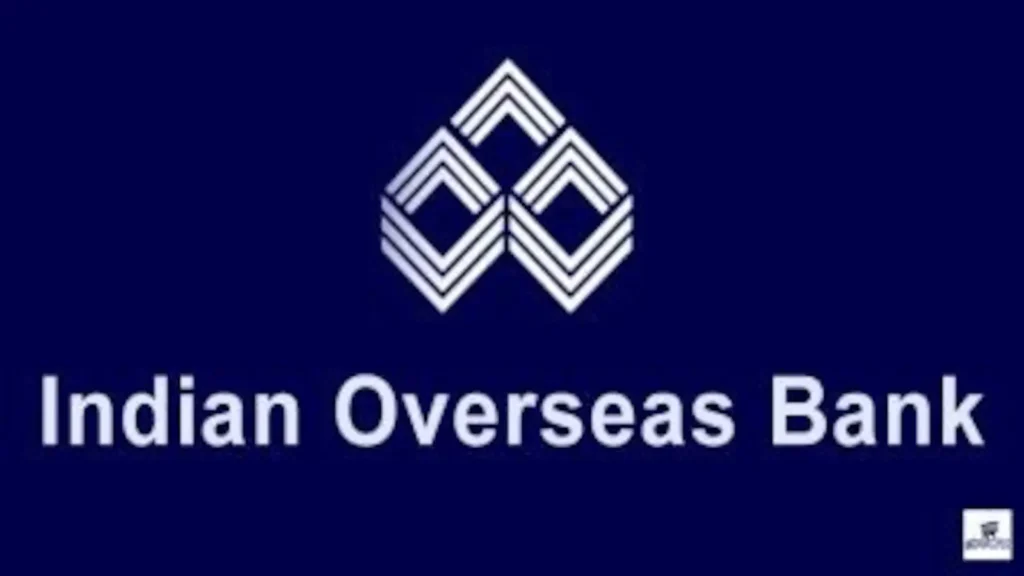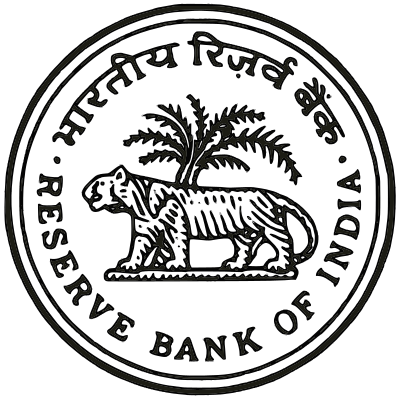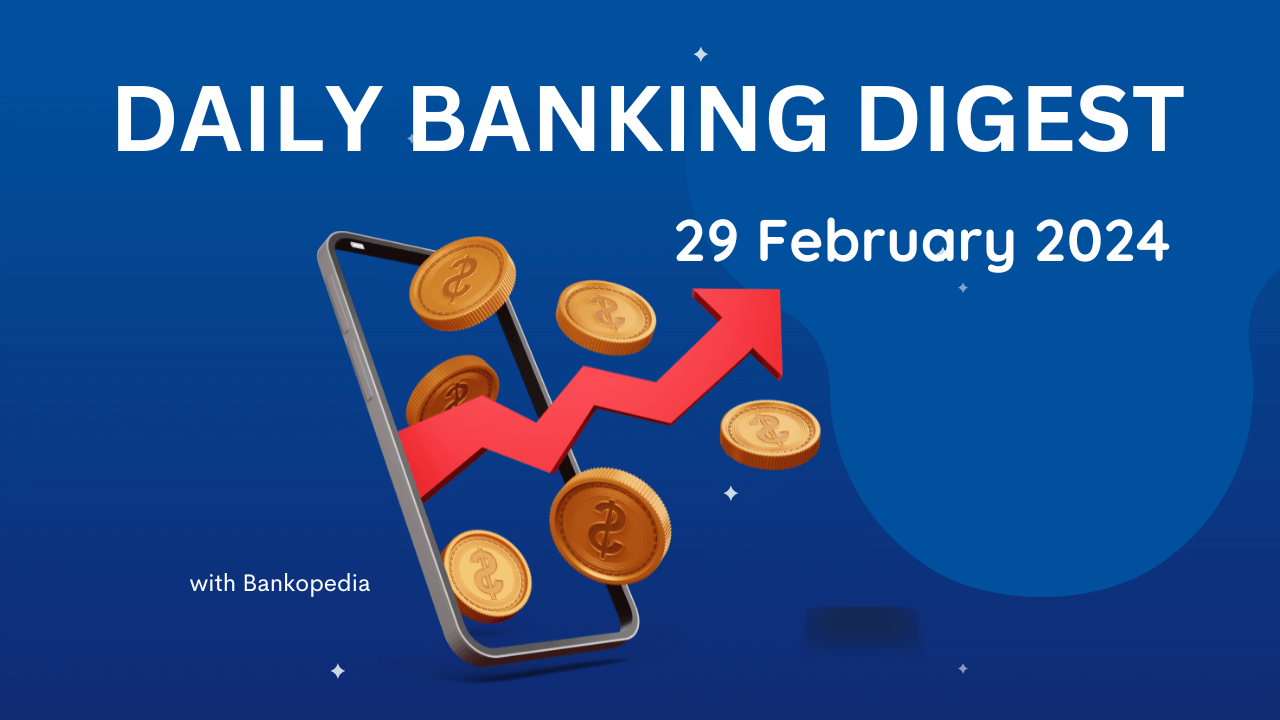Welcome to Daily Banking Digest, your premier source for the latest news and insights on May 10, 2024, focusing on banking, the economy, and finance. Our platform offers a comprehensive overview of the day’s most critical financial stories, market trends, and economic developments. Whether you’re a professional in the financial sector, an investor monitoring market movement, or someone interested in staying informed about the economic landscape, Daily Banking Digest provides reliable, up-to-date information.
Join our Telegram Channel for Daily PDF in your Inbox – Click Here
Table of Contents
SBI’s Q4 Profit Soars Due to Revenue Growth and Cost Control
State Bank of India (SBI) reported a record standalone quarterly net profit of ₹20,698 crore in Q4 FY24, a 24% increase year-over-year. This growth was driven by robust non-interest income, controlled operating expenses, and write-backs in provisions. The bank also declared a dividend of ₹13.70 per share for FY24.

Key Points
Net Profit – Highest standalone quarterly net profit of ₹20,698 crore – 24% increase year-over-year – 126% increase sequentially
Net Interest Income (NII) – Up 3.13% year-over-year to ₹41,655 crore
Non-Interest Income – Rose 24% to ₹17,369 crore – Includes fee income, forex income, and investment gains
Operating Expenses – Grew 1.83% year-over-year to ₹30,277 crore – Outpaced by operating income growth
Loan Growth and NPAs – Loan growth of 15.24% in FY24 – Gross NPAs declined to 2.24% – Net NPAs reduced to 0.57%
Capital Adequacy – Capital adequacy ratio of 14.28% – Adequate to support up to ₹7-lakh crore of balance sheet growth
Net Interest Margin – Declined to 3.28% in Q4 FY24 from 3.37% a year ago
Provisions – Loan loss provisions increased 156% – Write-backs from standard asset and other provisions
Deposits – Total deposits rose 11.13% to ₹49,16,077 crore – CASA deposits declined to 41.11% of domestic deposits
IOB Reports Strong Financial Performance with Record Net Profit and Improved Asset Quality
Indian Overseas Bank (IOB) has achieved record net profit in both the March 2024 quarter and the full year, driven by higher income and lower provisions. The bank’s asset quality has also improved, with fewer slippages and higher recovery of non-performing assets (NPAs). IOB plans to raise capital of ₹5,000 crore and open around 100 new branches in FY25.

Key Points
Financial Performance – Net profit increased by 24% to ₹808 crore in Q4FY24, the highest-ever quarterly profit. – Net profit grew by 26.5% to ₹2,656 crore in FY24, the highest ever annual net profit. – Interest income increased by 28% to ₹6,629 crore in Q4FY24. – Net interest income grew by 21% to ₹2,763 crore in Q4FY24.
Asset Quality – Gross NPA ratio declined to 3.10% in Q4FY24 from 7.44% in Q4FY23. – Net NPA ratio remained below 1% at 0.57% in Q4FY24. – Slippages decreased significantly to ₹1,516 crore in Q4FY24 from ₹4,029 crore in Q4FY23. – Total recovery stood at ₹4,549 crore in Q4FY24.
Growth and Expansion – Gross advances increased by 16% to ₹219,018 crore as of March 31, 2024. – Total deposits grew by 10% to ₹285,905 crore as of March 31, 2024. – CASA ratio improved to 43.9% as of March 31, 2024. – IOB plans to open around 100 new branches across India in FY25.
Capital Raising – IOB has received board approval to raise capital of ₹5,000 crore in 3-4 tranches.
Gold Loan NBFCs Unfazed by Cash Disbursal Limit, Analysts Anticipate Operational Expense Increase
The Reserve Bank of India (RBI) has directed NBFCs to cap cash loan disbursements at ₹20,000 per transaction. Gold loan NBFCs, such as Manappuram Finance and Muthoot Finance, believe the impact will be minimal as most of their business is already digital. However, India Ratings warns that reduced cash disbursements could lead to a growth slowdown for gold loan NBFCs and increased operational costs due to regulatory compliance.
Key Points
Impact on Gold Loan NBFCs – Gold loan NBFCs claim the impact of the RBI directive will be minimal due to their existing digital operations. – Manappuram Finance reports that 50% of its gold loan book is through its “Online Gold Loan” product, which is fully paperless. – Muthoot Finance estimates that 40% of its gold loans are transacted online.
Operational Changes – The ₹20,000 cap on cash disbursements will require operational changes, particularly in the gold loan business. – NBFCs will need to encourage customers to opt for online disbursements or bank account credit.
Financial Impact – Morgan Stanley Research predicts a transitory but manageable financial impact on gold loan NBFCs. – Muthoot Finance is expected to be the most impacted, followed by Manappuram Finance.
Customer Preferences – Most customers of gold loan NBFCs prefer direct transfers to bank accounts. – Customers who prefer cash will need to be informed of the new limit and may consider alternative lenders.
Regulatory Compliance – India Ratings warns that the regulatory action on IIFL Finance could increase operational costs for gold financing entities due to compliance costs and competitive intensity. – The rating agency calls for a standardized disbursal process across gold lenders.
Growth Prospects – India Ratings suggests that reduced cash disbursements could lead to a growth slowdown for gold loan NBFCs. – Mid-to-small gold loan NBFCs may prefer co-lending for profitable growth.
ESAF Small Finance Bank Reports 27% Growth in Overall Business for Q4 FY24
ESAF Small Finance Bank experienced a 27% growth in its total business in Q4 FY24, reaching ₹39,527 crore. Despite higher provisions, the bank reported a profit after tax of ₹43 crore, a decrease from ₹101 crore in Q4 FY23. The bank’s Net Interest Income (NII) and Pre-provisioning operating profit (PPoP) also increased significantly. Deposits grew by 35.5%, while Gross NPA and Net NPA stood at 4.8% and 2.3%, respectively.

Key Points:
Total Business Growth: – 27% growth in total business in Q4 FY24, reaching ₹39,527 crore.
Profit After Tax: – ₹43 crore profit after tax, a decrease from ₹101 crore in Q4 FY23.
Net Interest Income (NII): – 18.4% increase in NII to ₹591 crore.
Pre-provisioning Operating Profit (PPoP): – 40.7% growth in PPoP to ₹285 crore.
Deposits: – 35.5% growth in total deposits to ₹19,868 crore.
Gross NPA: – 4.8% Gross NPA in Q4 FY24.
Net NPA: – 2.3% Net NPA of advances in Q4 FY24.
Management Outlook: – Bank’s business is growing at a commendable pace. – Strategic initiatives and supervisory oversight will help navigate challenges and improve performance in the future.
PNB’s Net Profit Soars by Over 100% to ₹8,329 Crore in FY24, Driven by Enhanced Asset Quality and Reduced Credit Costs
Punjab National Bank (PNB) reported a significant increase in its consolidated net profit for 2023-24, driven by improved asset quality and lower credit costs. The bank’s net profit surged by 171.4% to ₹8,329 crore, while its quarterly net profit grew by 78.11% to ₹3,101 crore. PNB’s Board of Directors declared a dividend of ₹1.5 per share and approved a capital raising plan of ₹17,500 crore for 2024-25.

Key Points
Financial Performance – Consolidated net profit increased by 171.4% to ₹8,329 crore for 2023-24. – Quarterly net profit grew by 78.11% to ₹3,101 crore for Q4FY24. – Total income rose to ₹1,22,394 crore for 2023-24 and ₹32,977 crore for Q4FY24.
Asset Quality – Gross NPA ratio reduced to 5.73% from 6.82%. – Net NPA ratio declined to 0.7% from 2.72%. – Aiming to bring net NPA ratio below 0.5% and gross NPA below 5% in the current fiscal.
Capital Raising – Board approved a capital raising plan of ₹17,500 crore for 2024-25. – Includes a qualified institutional placement of ₹7,500 crore, AT-1 capital of ₹7,000 crore, and Tier-II bonds of ₹3,000 crore.
Other – Total recovery from NCLT stood at ₹3,224 crore in 2023-24. – PNB will submit its views to RBI on the draft proposal on project finance.
Argentina’s Inflationary Crisis: Printing 10,000 Peso Notes to Combat Soaring Prices
Argentina’s central bank is introducing a new 10,000 peso banknote to combat soaring inflation, which has reduced the value of the peso significantly. The new note, equivalent to approximately $10, aims to simplify transactions and reduce the need for carrying large amounts of cash.

Key Points:
Inflation in Argentina: – Inflation rate has reached 287% in March 2023, one of the highest in the world. – The value of the Argentinian peso has plummeted as a result.
New 10,000 Peso Banknote: – Will be introduced within the next month. – Equivalent to approximately $10. – Aims to simplify transactions and reduce the need for carrying large amounts of cash.
1,000 Peso Banknote: – Previously worth $58 on the black market in 2017. – Now worth only $1 due to inflation.
20,000 Peso Banknote: – Argentina’s central bank plans to introduce a 20,000 peso note later this year.
Zimbabwe’s Currency: – Zimbabwe’s central bank has introduced a new “structured currency” backed by gold to address inflation.
India’s Exports Surge in Over Half of Global Destinations in 2023-24
Despite global economic uncertainties, India’s exports have surged to 115 countries, accounting for 46.5% of its export basket. While merchandise exports declined slightly, services exports rose, resulting in a marginal overall export growth of 0.23%. India’s share in world merchandise exports has increased, and its rank has improved from 19th to 17th.
Key Points:
Export Destinations:
- 115 export destinations account for 46.5% of India’s export basket.
- Top 10 destinations include the US, UAE, Netherlands, China, UK, Saudi Arabia, Singapore, Bangladesh, Germany, and Italy.
- Exports to top 10 destinations increased by 13% year-on-year.
- UAE emerged as the primary destination, with a 12.71% growth in export value.
- Healthy growth was recorded in exports to Singapore, UK, and China.
- Exponential growth rates were observed in Russia, Romania, and Albania, indicating exploration of new markets.
Export Growth by Region:
- Outbound shipments to CIS, Oceania, and Europe expanded during 2023-24.
- Top export destinations in CIS include Russia, Uzbekistan, Ukraine, Armenia, and Tajikistan.
- Top export destinations in Oceania include Australia, Timor Leste, Samoa, Vanuatu, and Solomon Island.
- Major export growth in Europe was recorded in the UK, Romania, Albania, Netherlands, and Greece.
Export Commodities:
- 17 items registered an increase in exports, constituting 48.4% of India’s export basket.
- Sectors with increased exports include engineering, electronic goods, pharmaceuticals, and cotton yarn/fabrics/handloom products.
- Notable declines were observed in petroleum products and gems and jewellery.
Import Sources:
- India’s imports declined from 124 countries in 2023-24.
- Top 10 source countries account for 59.3% of India’s import basket.
- Decline in imports was reported from countries like UAE, Qatar, Kuwait, and Oman.
Export Outlook:
- India Exim Bank projects a 12.3% increase in merchandise exports during April-June 2024.
- Positive growth is attributed to strong GDP growth, manufacturing and services sector momentum, and global demand.
- Risks include uncertain prospects for advanced economies, geopolitical shocks, and geo-economic fragmentation.
India’s Goods Exports Surge by 12.3% in Q1 FY25: Exim Bank Report
The Export-Import Bank of India (India Exim Bank) predicts a 12.3% growth in India’s merchandise exports to $116.7 billion in the first quarter of FY25, driven by strong economic fundamentals and sustained manufacturing and services activity. Non-oil exports are also expected to grow by 10.7% to $93.9 billion. However, the outlook is subject to risks such as uncertain prospects for advanced economies and geopolitical shocks.

Key Points:
Export Growth Forecast: – Merchandise exports to grow 12.3% to $116.7 billion in Q1 FY25. – Non-oil exports to grow 10.7% to $93.9 billion.
Factors Driving Growth: – Strong GDP growth fundamentals and outlook. – Sustained momentum in manufacturing and services sectors. – Expected global easing of monetary tightening. – Base effect.
Risks to Outlook: – Uncertain prospects for advanced economies. – Geopolitical shocks. – Middle East crisis and Red Sea crisis. – Deepening geoeconomic fragmentation.
Global Trade Outlook: – WTO predicts slow recovery in global goods trade in 2024. – Volume of world merchandise trade to increase by 2.6% in 2024 and 3.3% in 2025. – Regional conflicts, geopolitical tensions, and economic policy uncertainties pose downside risks.
India’s Share in Global Trade: – India’s share of global goods exports was 1.8% in 2023. – India’s share of global imports was 2.8% in 2023. – India’s share of digitally delivered services rose to 6% in 2023 from 4.4% in 2019.
IREDA Establishes Subsidiary in GIFT City, Gujarat for Enhanced Financial Services
IREDA, a state-owned financial institution, has established a subsidiary in the International Financial Services Centre (IFSC) at GIFT City, Gujarat. This subsidiary, IREDA Global Green Energy Finance IFSC Limited, will enable IREDA to expand its global reach and secure competitive funding for the renewable energy sector.

Key Points:
- Incorporation of IREDA Global Green Energy Finance IFSC Limited:
- Officially incorporated on May 7, 2024.
- Received no objection letter from RBI in February 2024.
- Purpose of the Subsidiary:
- Extend IREDA’s global reach.
- Act as an offshore platform for securing competitive funding.
- Drive the growth of the renewable energy sector.
- Benefits of IREDA’s Entry into IFSC:
- Unlock fresh business prospects.
- Establish IREDA’s global footprint in the renewable energy sector.
- About IREDA:
- Non-Banking Financial Institution under the Ministry of New and Renewable Energy (MNRE).
- Promotes, develops, and extends financial assistance for renewable energy and energy efficiency projects.
DLF’s Luxury Flats in Gurugram: 800 Units Sold for Rs 5,590 Crore in Record-Breaking Launch
DLF has sold all 795 apartments in its luxury housing project ‘DLF Privana West’ in Gurugram within three days of launch, generating a revenue of approximately Rs 5,590 crore. The project’s success follows the company’s earlier triumph with ‘DLF Privana South,’ where 1,113 apartments were sold for Rs 7,200 crore within the same timeframe.

Key Points:
Project Details: – Name: DLF Privana West – Location: Sector 76 and 77, Gurugram – Size: 12.57 acres – Number of apartments: 795 – Value of sales: Rs 5,590 crore
Market Performance: – DLF shares traded in the green despite a steep fall in BSE Sensex – Gurugram’s real estate market has witnessed robust demand and price increases
Company Performance: – DLF is India’s leading real estate developer in terms of market capitalization – Completed over 158 real estate projects and developed over 340 million square feet – Future development potential of 215 million square feet – Annuity portfolio exceeding 42 million square feet
Customer Profile: – Significant involvement of non-resident Indians (NRIs) in purchasing apartments
Company Vision: – Commitment to creating integrated luxury living spaces amidst lush green surroundings – Catering to the evolving lifestyle preferences of homebuyers
Indian Retail Industry Projected to Surpass $2 Trillion by 2030
India’s retail market is projected to reach $2.2 trillion by 2030, with 90% of sales occurring offline. Omnichannel shopping experiences, where consumers seamlessly transition between online and offline channels, are becoming increasingly popular. Digital-first brands are well-positioned to lead the omnichannel revolution in India.
Key Points:
Market Size and Growth: – India’s retail market is expected to surpass $2.2 trillion by 2030. – 90% of sales are projected to occur offline.
Consumer Behavior: – Consumers are embracing omnichannel shopping experiences. – Online presence influences a substantial portion of purchases.
Omnichannel Success Stories: – Companies like Mamaearth, Cult.fit, and Lenskart have successfully scaled through omnichannel strategies. – Agrostar provides an omnichannel experience to farmers in rural India.
Digital-First Brands: – Digital-first brands are best positioned to lead omnichannel strategies. – They can leverage product innovation, data-driven marketing, and technology to scale effectively.
Omnichannel Strategies: – No single formula works across categories. – Brands should be “omniprepared” for omnichannel.
Evolution of Consumer Brands: – Pioneering brands have established online as a viable channel. – Brands are now evolving to serve consumers wherever they are. – Mamaearth is an example of a brand that has successfully transitioned to omnichannel.
Government Forecasts Severe Power Shortage, Implements Measures to Prevent Outages
India is facing its largest power shortfall in 14 years due to a decline in hydropower generation and delays in commissioning new coal-fired plants. The government is taking measures to avoid outages by deferring plant maintenance and reopening idled units. The peak shortage is expected to reach 14 GW in June during nighttime hours.
Key Points:
Power Deficit: – India is projecting its biggest power shortfall in 14 years in June. – The deficit is due to a slump in hydropower generation and delays in commissioning new coal-fired plants.
Peak Shortage: – A peak shortage of 14 GW is forecast in June during nighttime hours.
Government Measures: – Deferring planned plant maintenance during June. – Reopening 5 GW of idled coal plant capacity.
Power Demand and Capacity: – Grid-India projects maximum night-time demand of 235 GW in June. – Nearly 187 GW of thermal capacity and 34 GW from renewable sources are available.
Emergency Measures: – The power ministry invoked emergency rights to direct gas-based and imported coal-based power plants to operate at full capacity.
Coal Use: – India has long defended the use of coal, but has slowed capacity growth to focus on green energy transition. – Plans to set up new coal power plants have gathered momentum, but will take at least four years to start generation.
RBI Conducts Open Market Operations, Repurchasing Government Bonds for Rs 10,512 Crore
The Reserve Bank of India (RBI) conducted a government bond repurchase auction on Thursday, aiming to buy back Rs 40,000 crore worth of bonds. However, the RBI only accepted bids worth Rs 10,512 crore, significantly below the target. The auction resulted in a sell-off in the market, with yields on benchmark bonds rising by one basis point.

Key Points:
RBI Bond Repurchase Auction: – RBI repurchased Rs 10,512 crore worth of government bonds against a target of Rs 40,000 crore. – Bids worth Rs 53,333 crore were received at the auction. – RBI accepted bids only at Financial Benchmarks India Private Limited (FBIL) levels.
Market Reaction: – Market participants expected the RBI to mop up at least Rs 25,000 crore worth of securities. – The shortfall in the auction led to a sell-off in the market, with yields on benchmark bonds rising.
Securities Scheduled for Buyback: – 6.18 per cent 2024 – 9.15 per cent 2024 – 6.89 per cent 2025
Bid Distribution: – The 6.18 per cent 2024 bond received the maximum bids worth Rs 28,464 crore. – The RBI received the least amount of bids (Rs 437 crore) in the same security.
Participants: – State-owned banks and insurance companies picked up most of the funds. – Banks were more aware of the appropriate bid levels. – Mutual funds held a substantial amount of short-term papers but did not receive as much of the funds.
India’s Fiscal Deficit Outlook for FY24 Exceeds Expectations
The Indian government’s fiscal deficit for 2023-24 (FY24) is expected to be slightly lower than the projected Rs 17.34 trillion. This improvement is attributed to higher tax and non-tax revenues. The government aims to reduce the fiscal deficit to 4.5% by 2025-26, with a target of 5.1% for 2024-25 (FY25). Capital expenditure is also on track, with no cuts in spending in the first quarter of FY25. The government may consider another round of government securities buyback to manage interest savings.
Key Points:
Fiscal Deficit: – FY24 fiscal deficit expected to be slightly lower than projected Rs 17.34 trillion. – Government narrowed FY24 fiscal deficit target to 5.8% of GDP. – Fiscal deficit for April-February FY24 reached Rs 15.01 trillion, 86.5% of revised target.
Fiscal Glidepath: – Government aims to reduce fiscal deficit to 4.5% by FY26. – FY25 fiscal deficit target set at 5.1% of GDP.
Capital Expenditure: – Government’s capital expenditure on track with projections. – No cuts in spending in first quarter of FY25. – Thrust on infrastructure and capex expected to continue in FY25 Budget.
Government Securities Buyback: – Government may consider another round of government securities buyback. – Announced bond buyback of Rs 40,000 crore on May 9, 2024.
Credit Rating Agencies’ Assessments Essential for All Nations: Subbarao
Former Reserve Bank of India (RBI) Governor Duvvuri Subbarao discusses fiscal concerns, freebies, farm loan waivers, the 2G scam, and inflation targeting in India. He emphasizes the importance of fiscal discipline, the impact of sovereign debt, and the role of credit rating agencies. Subbarao also highlights the challenges faced by bureaucrats in decision-making and the need for restraint in government spending.
Key Points:
Fiscal Concerns: – Fiscal expansionary policies may not be effective in emerging-market economies like India. – High sovereign debt levels are a concern, and revenue generation is crucial. – India’s growth rate has been above the interest rate on debt, but a primary surplus is lacking.
Credit Rating Agencies: – Ratings by credit rating agencies matter, especially for emerging-market economies. – India should challenge agencies’ methodologies but cannot pressure them beyond a point.
RBI’s Infrastructure Project Financing Proposal: – Subbarao expresses discomfort commenting on the RBI’s proposal due to limited information. – The RBI may be considering the larger economy and potential future problems.
Bureaucratic Decision-Making: – Bureaucrats may be wary of taking decisions due to fear of prosecution. – This can lead to policy paralysis and is not in the best interests of the country.
2G Scam: – The 2G scam involved two issues: licensing procedure and pricing. – Subbarao was involved in determining the price, which he believed should reflect the scarcity premium of spectrum.
Freebies and Social Welfare Measures: – Subbarao welcomes the Prime Minister’s criticism of “revdi culture” but notes that all political parties are guilty of promising freebies. – There should be restraint on government spending on freebies and a focus on the quality of expenditure.
Farm Loan Waivers: – Farm loan waivers are a problem for the entire public, not just farmers. – The larger public is difficult to organize, making it challenging to prevent loan waivers.
Inflation Targeting: – Subbarao initially had reservations about inflation targeting but now believes it is becoming more effective. – Supply shocks can still pose challenges for monetary policy.
Fiscal Consolidation and Monetary Policy: – Fiscal profligacy can stoke inflation and make it difficult for monetary policy to control inflation.
RBI’s Policy Rate Projections: – The RBI does not provide dot plots for policy rate projections. – However, the MPC minutes, forward guidance, and media analysis provide some insights into the RBI’s thinking.
FDI Clearances: – Subbarao suggests that the Foreign Investment Promotion Board (FIPB) may have been more efficient in handling FDI clearances.
Finance Ministry Expedites IDBI Bank Stake Sale Discussions with RBI
The Finance Ministry has expressed concern over the delay in the Reserve Bank of India’s (RBI) vetting process for bidders interested in acquiring a stake in IDBI Bank. The delay has stalled the strategic stake sale, which is seen as a test case for the government’s policy to reduce its presence in businesses.

Key Points:
1. RBI’s Vetting Process Delay: – The RBI’s “fit and proper assessment” is a crucial step for bidders to qualify for financial bids. – The Finance Ministry has raised concerns about the “inordinate” time taken by the RBI to complete the process.
2. Reasons for Delay: – The involvement of multiple players, including private equity firms, NBFCs, and consortiums, has led to detailed conditionalities.
3. Stake Sale Process: – The stake sale involves two stages: expression of interest (EOI) and “fit and proper assessment.” – The second stage, due diligence by potential bidders, can take up to two to three months. – Financial bids will be invited after due diligence.
4. Government’s Goal: – The government aims to conclude the transaction by the end of the current financial year.
5. Background: – The government announced its intention to reduce its stake in IDBI Bank in the FY17 Union Budget. – The preliminary information memorandum for inviting EOI was issued in October 2022. – The government and LIC plan to sell 60.72% stake in IDBI Bank.
Sebi Proposes Streamlining Disclosure Requirements for Non-Convertible Securities
SEBI proposes to simplify the issuance of non-convertible securities by removing the requirement to disclose PAN and personal addresses of issuers’ promoters in offer documents. Other relaxations include easing the disclosure of business and commercial details for property acquisitions, providing branch/unit details via QR code, aligning operational and financial parameter disclosure periods, and offering flexibility in offer document signatories.

Key Points:
- PAN and Personal Address Disclosure Removal: PAN and personal addresses of issuers’ promoters will no longer be required in offer documents.
- Relaxed Business and Commercial Details Disclosure: Certain business and commercial details for property acquisitions will no longer be required in offer documents.
- Branch/Unit Details via QR Code: Branch/unit details will be provided via a static QR code and web-link instead of being included in the offer document.
- Aligned Disclosure Periods: Key operational and financial parameters will be disclosed in line with the period for financial information disclosure in the offer document.
- Flexible Signatories: Flexibility will be provided in the signatories for offer document attestation.
- Commercial Paper Payment Confirmation: Entities with listed commercial paper will provide payment obligation fulfillment certificates within one working day instead of two.











